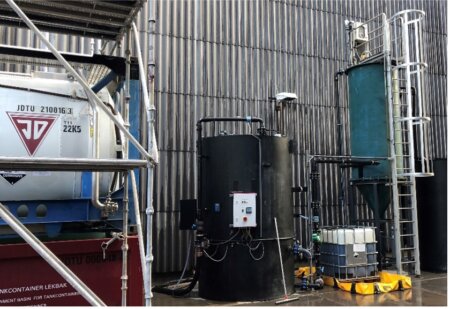Industrial waste water treatment: turning a pilot into full scale
Last week our client, an international fertilizer processing company, started the construction of the foundation for a new waste water treatment plant, prior to discharging onto surface water. The main goal is to remove phosphorus to meet the new consent levels.
The initial ideas for the set-up of the waste water treatment plant have been composed and tested by Geert Notenboom (http://www.wacono.nl/) and Anthoney Marta (https://www.amart.nl/).
Prior to designing the full scale plant (capacity 60 m3/h), a pilot plant is operated to determine the final basis of design and control philosophy. The plant essentials consist of NaOH dosing, feed water pH conditioning, direct continuous filtration with inline coagulant dosing and a settling tank for the continuously released wash water.
The results of the pilot plant have been used to design and build a robust waste water treatment plant, which will be operational mid-2024.
The pilot plant revealed that creating a proper pH control system under varying feed flow conditions proved to be crucial for reliable results. Raising the feed water pH to a pH range of 5.5 – 6.4 was sufficient to convert the soluble phosphorus into insoluble FePO4 flocs. These flocs could be retained very well even at filtration rates up to 10 m/h and feed phosphorus concentrations up to 10 mg/l P. A very clear filtrate is produced, as may be seen in the video, showing the filtrate section of the sand filter. In the center part of the filter the washed filter sand is returning back to the top of the filter bed.


